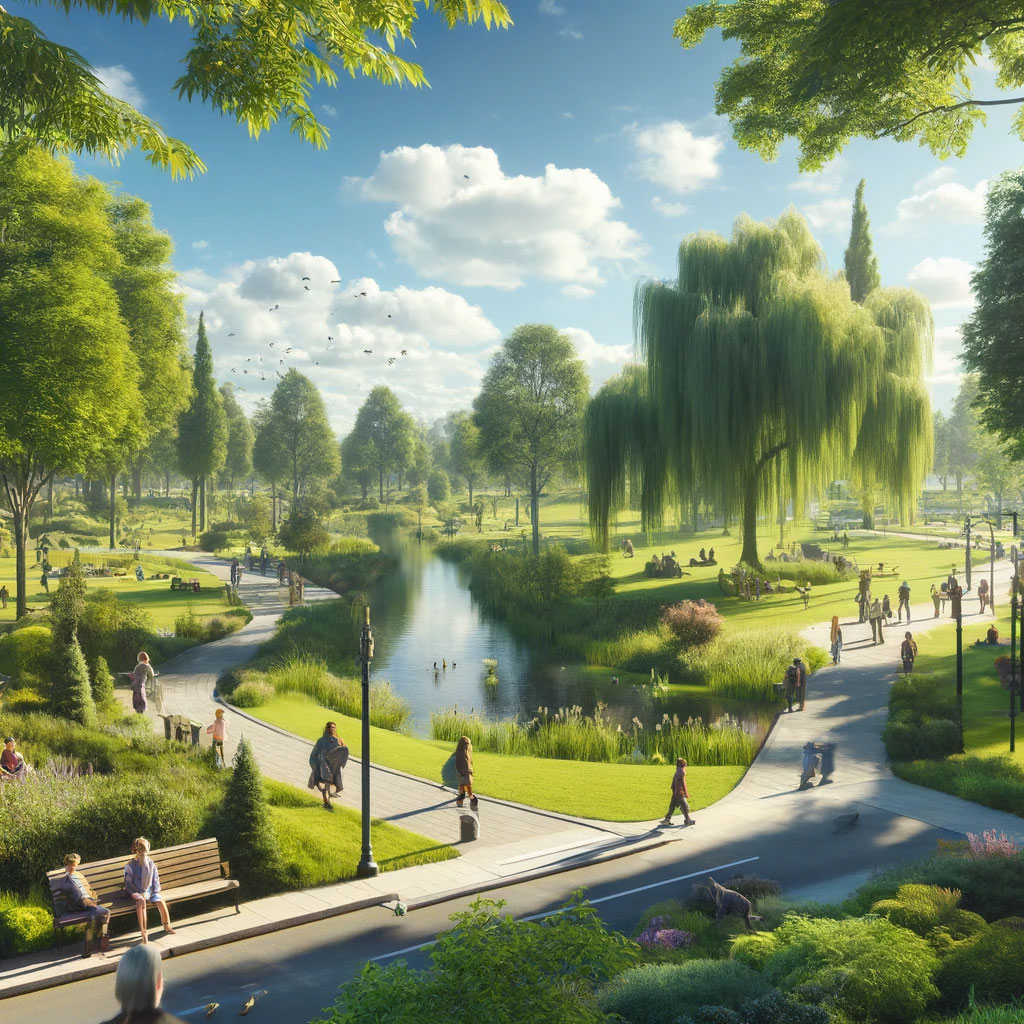Introduction
Playgrounds are more than just play spaces for children—they are vital components of urban parks that contribute to child development and community engagement. This article delves into how innovative playground designs are transforming urban parks into vibrant, interactive hubs for families.
The Evolution of Playground Design
Traditional Playgrounds vs. Modern Innovations
Furthermore, traditional playgrounds often focus on basic structures like swings and slides. Modern designs, however, incorporate elements that stimulate creativity, adventure, and learning, using diverse materials and inclusive layouts.
Role of Technology in Playground Design
Advancements in technology have introduced interactive features that blend physical play with digital applications, enhancing children’s sensory experiences and cognitive development.
Benefits of Innovative Playgrounds
Cognitive Development Through Play
Moreover, innovative playgrounds are designed to challenge children’s problem-solving skills and encourage exploration, which are crucial for cognitive growth.
Physical Health and Motor Skills
Hence, a dynamic playground designs promote vigorous physical activity, helping children develop their motor skills and maintain healthy body weight.

Social and Emotional Growth
Fostering Social Interaction
Therefore, playgrounds are social spaces where children learn to interact, share, and develop empathy—a foundational aspect of emotional intelligence.
Enhancing Emotional Well-being
The joy and freedom experienced in playgrounds are essential for children’s emotional health, providing a safe space to express themselves and build confidence.
Safety and Accessibility in Playgrounds
Incorporating Safety Without Compromising Fun
Modern playgrounds are designed with safety as a priority, using materials and layouts that reduce the risk of injuries while preserving the fun elements of play.
Designing for All: Accessibility and Inclusion
Ensuring that playgrounds are accessible to children of all abilities is crucial. This includes sensory-friendly areas for children with special needs, ramps for wheelchairs, and designs that accommodate diverse abilities.
Sustainability in Playground Design
Eco-Friendly Materials and Practices
The use of sustainable materials and eco-conscious designs is becoming increasingly important in playground construction, contributing to the overall health of the urban environment.
Promoting Environmental Stewardship
Playgrounds can also serve as educational platforms to teach children about the environment, using elements like recycled materials and nature-based play areas.
Global Innovations in Playground Design
Case Study: Playgrounds Around the World
From Denmark’s adventure playgrounds to Japan’s disaster-proof designs, this section explores how different cultures are pioneering unique approaches to play.
Community Involvement in Playground Projects
The Role of Community Feedback
Community input is essential in designing playgrounds that meet the needs of local children and families, fostering a sense of ownership and pride in the shared spaces.
Volunteerism and Community Builds
Highlighting successful community build projects where locals come together to create playgrounds, strengthening community bonds and reducing project costs.
Conclusion
Innovative playground designs in urban parks are not just upgrading the play experience for children but are also enhancing community engagement, promoting inclusiveness, and instilling environmental consciousness. As playgrounds continue to evolve, they remain pivotal in shaping healthy, well-rounded urban childhoods.
FAQs
- How do innovative playgrounds contribute to child development? They stimulate cognitive, physical, social, and emotional growth through creative and interactive play structures.
- What makes a playground inclusive? Inclusive playgrounds cater to children of all abilities, featuring designs that accommodate everyone, regardless of their physical or cognitive abilities.
- Why is community involvement important in playground design? It ensures the playground meets local needs and fosters a sense of community ownership and pride.
- How can playgrounds educate children about sustainability? By incorporating eco-friendly materials and nature-based elements, playgrounds can teach children about environmental stewardship.
- What are the safety considerations in modern playground design? Modern designs focus on minimizing risks without stifling fun, using safe materials and thoughtful layouts to prevent injuries.
Leave a Reply